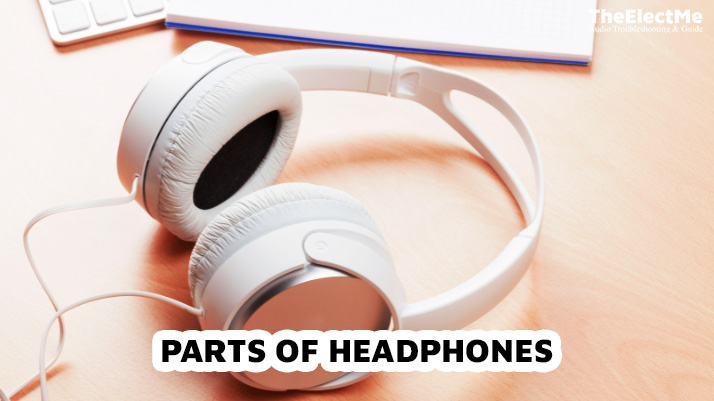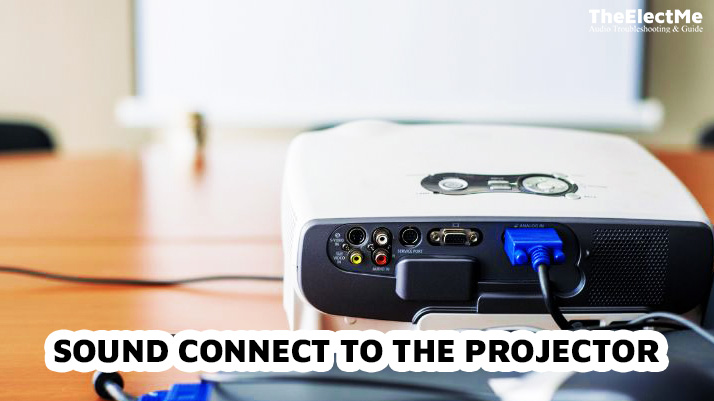The headphone jack, cable and speakers are the parts of headphones. You are familiar with these parts, but do you know about the function of each part? Understanding the various parts and their functions can greatly enhance your listening experience.
To gain knowledge about the headphones part, keep reading. So, let’s dive into the world of headphones and explore their different components.

What are the Parts of Headphones, and How Does Each Part Transform Music into Magic?
Headphones have become an essential accessory for music lovers, gamers, and professionals alike. But have you ever stopped to wonder about the different parts that make up these audio devices?
So, let’s take a closer look at the different parts of headphones and how they work together to create an optimal listening experience.
1. The Headband
The headband connects the ear cups and rests on top of your head. Its main purpose is to provide stability and support for the headphones.
Different Designs and Adjustability Options
There are various designs of headbands, such as adjustable, fixed, wraparound, and suspension. Adjustable headbands allow you to customize the fit according to your head size.
Fixed headbands may not be suitable for all head sizes. Wraparound headbands wrap over your head and provide a secure fit. Suspension headbands have a flexible design that conforms to your head shape.
The adjustability of the headband is crucial in achieving comfort. It also ensures the weight of the headphones is distributed evenly across your head. A poorly fitted headband can cause discomfort and strain on your neck.
2. The Cable
The cable is responsible for transmitting the audio signal from the device to the headphones. It connects to the headphone jack and plays a crucial role in sound quality.

Various Cable Types (Detachable, Flat, Coiled)
Different types of cables offer different benefits. Detachable cables are convenient for storage and replacement. Flat cables are less likely to tangle, making them ideal for on-the-go use.
Longer cables offer more freedom, but shorter cables may be preferred for portable use. The material of the cable also affects the durability and sound quality.
3. The Connectors
Connectors are the small metal pieces that join the cable to the audio source. They play a significant role in signal transmission and compatibility.

Types of Connectors (3.5mm, 6.35mm, USB, Bluetooth)
The most common connector is the 3.5mm jack, which is found on most devices, such as smartphones and laptops. 6.35mm connectors are larger and used for high-end audio equipment.

AmazonBasics USB 3.0 Extension Cable: Female to Male Adapter
Extend the reach of your USB devices with high-speed data transfer using this reliable and durable USB 3.0 extension cable from AmazonBasics.
USB connections are mainly used for digital headphones, while Bluetooth allows wireless connectivity.
Make sure to check the type of connector your device has before purchasing headphones to ensure compatibility.
4. Speaker Drivers and Ear Cups
Speaker drivers are the main components of headphones that produce sound. They consist of magnets, voice coils, and diaphragms. All these parts work together to convert electrical signals into audible sound waves. Ear cups house the speaker drivers and are responsible for noise isolation and comfort.
1) Noise isolation: Ear cups create a seal around your ears, blocking out external noise.
2) Comfort: Soft and adjustable ear cups provide comfort for long listening sessions.
3) Sound leakage: Closed-back ear cups prevent sound from escaping, while open-back ear cups allow some sound to leak out.

5. The Controls and Microphone (If Applicable)
Some headphones come with in-line controls and microphones, while others have on-cable or touch controls. These features allow you to adjust volume, change tracks, and take calls without having to reach for your device.
Importance of Accessibility and Communication Features
For individuals with disabilities, accessibility features like voice control can greatly enhance their listening experience. Communication features like built-in microphones are necessary for hands-free calls and voice commands.
You should consider the type and placement of controls when purchasing headphones, depending on your personal preferences.
6. Headphone Cushion and Pads
Cushions and pads are designed to provide cushioning and support for your ears. They also play a crucial role in noise isolation, comfort, and sound leakage.

Materials and Design Options
Headphone cushions can be made of various materials like foam, leather, or cloth. Foam provides good noise isolation but may cause discomfort after extended use.
Leather is more durable and provides better sound isolation, but it can cause sweating. Cloth cushions are breathable, but they may not be as effective in noise isolation.
So, these are the main parts of headphones that work together to create an excellent listening experience. However, some other features and accessories contribute to the overall functionality of headphones.
Let’s move to the next section, why it is important to know about the different parts when purchasing headphones.
Why Is It Important To Understand The Different Parts Of Headphones?

When purchasing headphones, it can be tempting to focus only on the brand or price. However, understanding the different parts and their functions can greatly impact your listening experience.

Audio-Technica ATH-M40x: Professional Studio Monitor Headphones
Experience studio-quality sound with precision and comfort – ideal for professionals and audiophiles alike.
For example, if you prefer a more secure fit and better weight distribution, adjustable headbands may be the way to go. If you want to use your headphones for gaming, detachable cables can offer convenience and flexibility.
Knowing about the parts can also help you troubleshoot any issues that may arise with your headphones. Without proper knowledge, you may end up spending more money on replacements or repairs.
Frequently Asked Questions
What are the 4 wires in earphones?
Four-wire cables are common in headphones with microphones. They consist of separate wires for the left and right audio channels, a wire for the ground connection, and a wire for the microphone.
What are the tips of headphones called?
Single flange ear tips are the most common type of ear tips. They come in different sizes and materials, such as foam or silicone, to provide a comfortable fit.
Are headphone covers worth it?
No, headphone covers are not necessary. However, they can be useful for keeping your headphones clean and in good condition.
Final Thoughts – Parts of headphones
To summarize, headphones are made up of various parts that work together to produce high-quality sound and provide comfort. The parts of headphones we discuss in this document include the headband, cable, connectors, speaker drivers and ear cups, controls, and microphone (if applicable).
When purchasing headphones, it is essential to consider the role of each part in creating an optimal listening experience. One wrong choice can greatly impact your comfort, sound quality, and overall satisfaction with your headphones.



